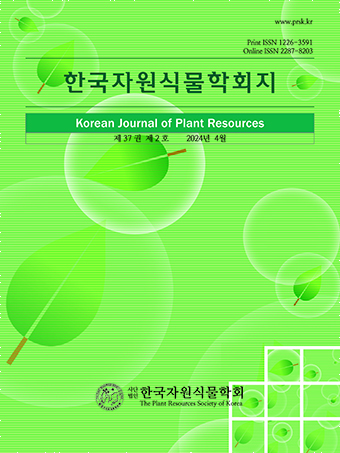Abstract
References
Information
Choung, Y.S., B.M. Kim, K.S. Lee, K.H. Cho, K.Y. Joo, J.O. Hyun, H.R. Na, H.K. Oh, G.H. Nam and J.S. Kim. 2020. Wetland Preference and Life Form of the Vascular Plants in the Korean Peninsula. National Institute of Biological Resources. Incheon, Korea. pp. 1-235 (in Korean).
10.1186/s41610-021-00183-0
- Publisher :The Plant Resources Society of Korea
- Publisher(Ko) :한국자원식물학회
- Journal Title :Korean Journal of Plant Resources
- Journal Title(Ko) :한국자원식물학회지
- Volume : 35
- No :4
- Pages :471-501
- Received Date : 2022-03-15
- Revised Date : 2022-04-27
- Accepted Date : 2022-05-09
- DOI :https://doi.org/10.7732/kjpr.2022.35.4.471




 Korean Journal of Plant Resources
Korean Journal of Plant Resources







